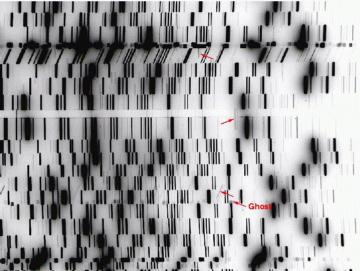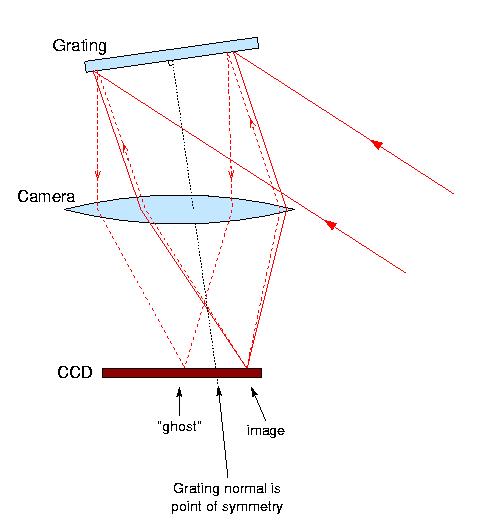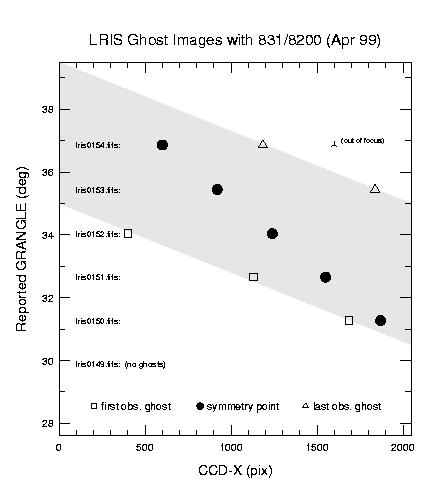A. C. Phillips (UCO/Lick)
Background
This document describes how ghosts arise in LRIS spectra. This general principles presented here also apply to DEIMOS.Description
Zeroth-order ghosts result from a simple reflection from the grating, when the grating is close to face-on with respect to the camera. Since the grating is a rather poor mirror (especially in this configuration) the ghosts are usually of low intensity, <1%.Light from the collimator enters from the right, and is dispersed by the grating, forming an image at each wavelength on the detector. Reflected or scattered light from strong spectral features, such as very intense night-sky lines, passes back through the camera, becoming parallel beams at the grating where a portion is reflected as if the grating were a simple mirror. This “zeroth-order” light is then re-imaged on the detector. The projection of the grating normal is a common point of symmetry for all “primary-ghost” pairs.
Description
The simple picture above is verified in data from LRIS with the 831/8200 grating. A sequence of exposures was taken at different grating tilts (GRANGLE), and the location of ghosts and primaries measured (in the plot, each horizontal line is a different exposure). As the grating angle changes, the measured point of symmetry moves across the CCD. In some cases, the ghost spectra are truncated at a particular pixel location -- this is because the corresponding primary images are missing, because they fall off the detector. The gray band marks the expected region of ghosts, determined by the upper and lower edges of the CCD reflected about the symmetry point. In one frame, an obviously out-of-focus ghost appears outside the expected range; this is due to an extremely strong primary imaged (out-of-focus) on the mounting beyond the edge of the CCD.Sample Ghost image

A section of one of the LRIS images showing ghosts (arrows; many others are also present). (Frame 153, April 1999)
Many thanks to Pieter van Dokkum for providing the images and brief analysis below for the 1200 line grating. (2016 Feb Leap Day!)
The data below were taken using the 1200 line grating. The ghosting in the arc images appear to be a single reflection from the opposite side of the mask. The position of the reflection changes with rotation.

Below is an example of a 9 hr, sky-subtracted observation. The object is the faint fuzz in the upper half of the slit (it's a large, low surface brightness galaxy) The nearly vertical lines are sky line residuals (red). The faint tilted lines are ghosts of another (tilted) slit (yellow). They mess up the spectrum, creating "fake" absorption and emission features.

Below is a model of the ghosting. The top image is a 9 hour spectrum. The middle image is an inverted, scaled, and slightly smoothed blue side portion of a spectrum from a different slit. The bottom image is a difference of the top and middle, and shows that for most lines, the emission is well subtracted. Some of the lines were brighter in the model.

Send questions or comments to:DEIMOS Support

